13 Cool Things to see at Ephesus Ancient City: The Ultimate Sightseeing Guide to Explore the Best of Ephesus Ruins in Turkey
Van Travel
What are the coolest things to see at Ephesus? Well it’s all cool but I want to share with you some really amazing stories and insights about the ancient city of Ephesus so that when you go, you will have some idea of the things to see, what to photograph and a general idea of what the ancient city is like.
Ephesus is incredible, said to be one of the finest examples of Roman ruins in Turkey and the world. Most people have it on their itineraries if they are visiting Turkey and rightly so it’s magnificent, amazing and awe inspiring. As you walk through the incredibly preserved streets and somewhat intact buildings you find yourself being transported back to the time of Antiquity, it’s easy to imagine oneself leisurely strolling towards the bathhouse in a toga.

Elaborate Carvings on Marble St
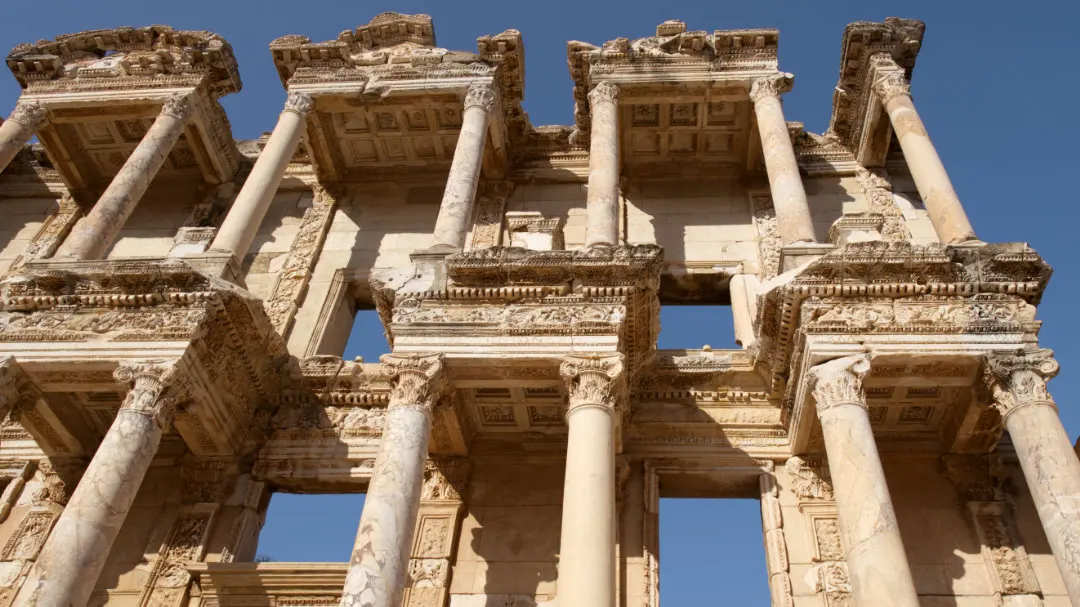
The Celsus Library
Table of Contents
When to visit Ephesus?
Ephesus is open all year round and not surprisingly it gets busy! With over two million visitors a year, it is the second most visited place in all of Turkey, with visitors and tours coming from all around the world.
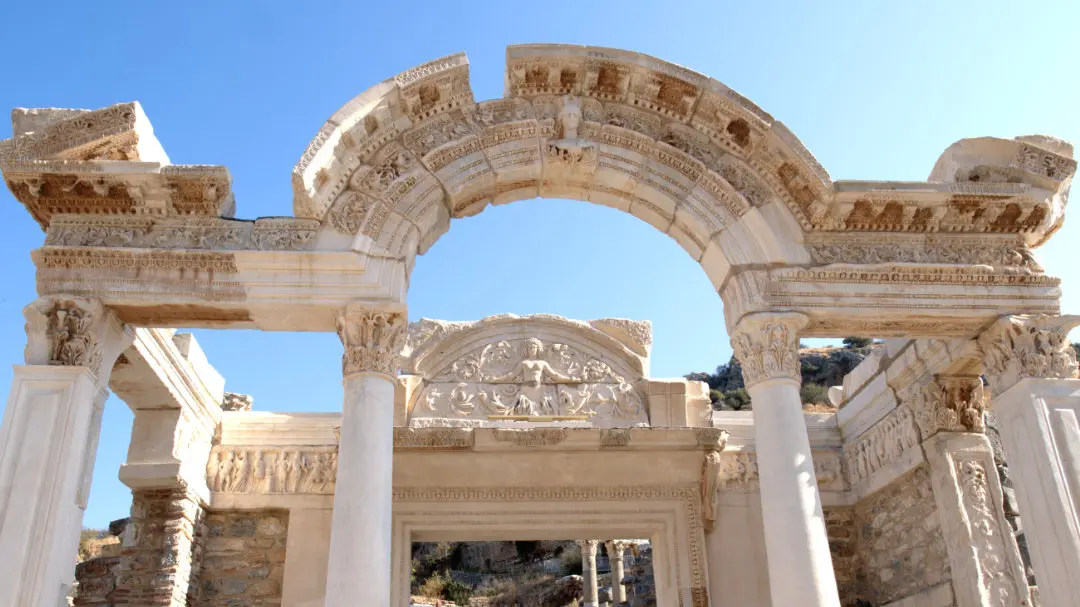
Hadrians Temple
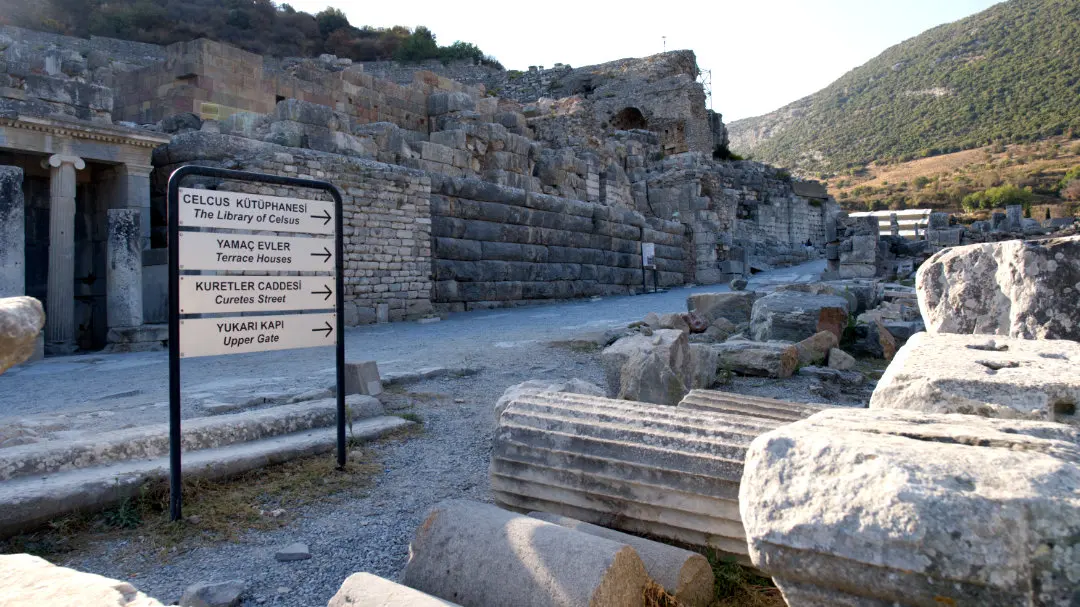
Directions to the Library
Ephesus opening times & cost?
Ephesus is open everyday. With different operating times for summer and winter. Note that on the first day of religious holidays Ephesus opens later from noon/ 12pm.
In the summer the opening hours are: 08:00 until 19:00
In the winter the opening hours are: 08:00 until 17:00
Ephesus entrance costs 200TL | £8.60 | €10
The Terraced Houses are an extra 45TL | £1.90 | €2.20
If you are planning on visiting many Archeological sites and museums on your visit to Turkey, you can buy the Museum Pass run by the Turkish ministry of culture and tourism. Depending on where you are and what you are going to see and how long your visit is you can find the perfect pass for you here. The Aegean Museum Pass is 650TL | €31 | £27 and you can use it at all of these sites.

Directions at Ephesus
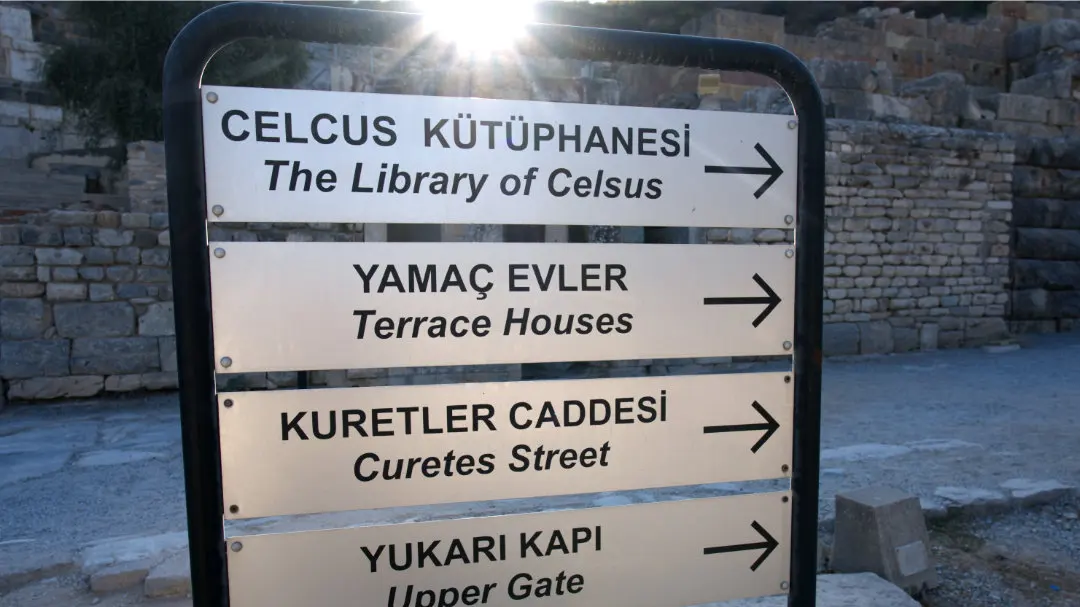
Directions at Ephesus
How to get there?
Ephesus is located in the Central Aegean west coast of Turkey. The small city of Selcuk is 2 miles away, in the boundary of Izmir Province. Ephesus is 82km away from the centre of Izmir city and takes around one hour to drive there. Bodrum is just over two hours drive away. And Istanbul is around 5 and a half hours away, which might seem far but Turkey is a huge country covering a lot of landmass so and a 5 hour drive from Istanbul is easily manageable for a tour operator!
There are many amazing things to see in the city of Selçuk, so be sure to leave yourself enough time to discover the amazing sites there like the Temple of Artemis and Ayasuluk Castle. Selçuk has a big range of hotels, guesthouses and places to stay that suit all styles and budgets, so its a great place to stay if you are visiting Ephesus.

The Celsus Library

Upper Agora
Guide or no guide?
To guide or not to guide, that is the question.
You don’t need to go for the guided option however and leisurely go at your own pace, taking it all in when and how you want, and you will still enjoy yourself.

Looking at the Celsus Library from Gate of Mazuez
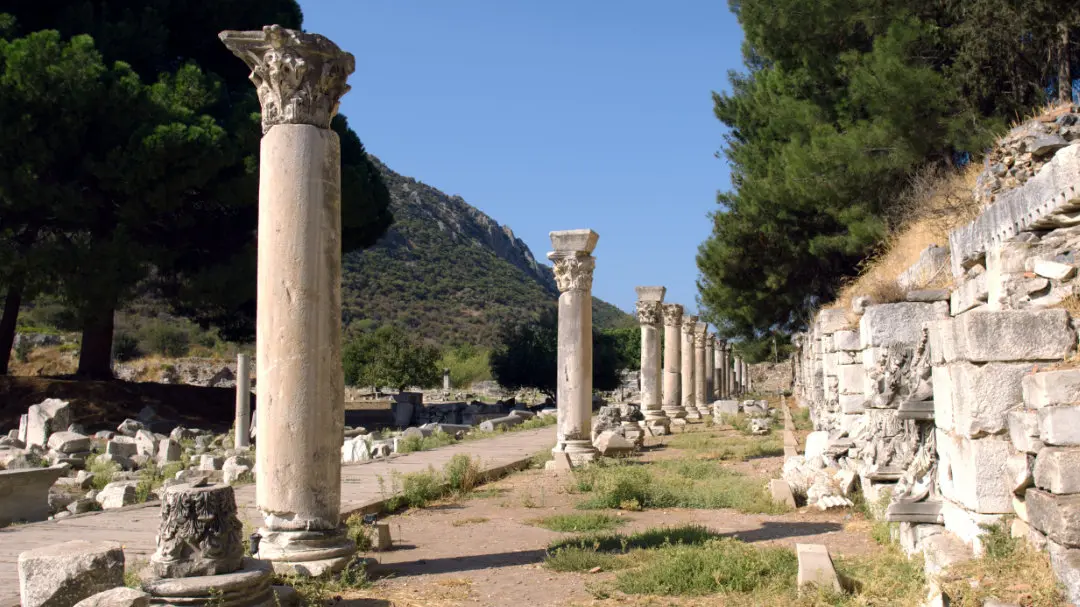
Upper Agora walkway
Ephesus Archaeological Site
The archeological site is big, there are two entrances: one that will lead you into Ephesus from the northern (Lower Gate) which will take you out to where the grand theatre and main streets are and the south (Upper Gate) entrance which will take you in on the other side of Ephesus where you can walk down from the State Agora through the ancient city and back up.
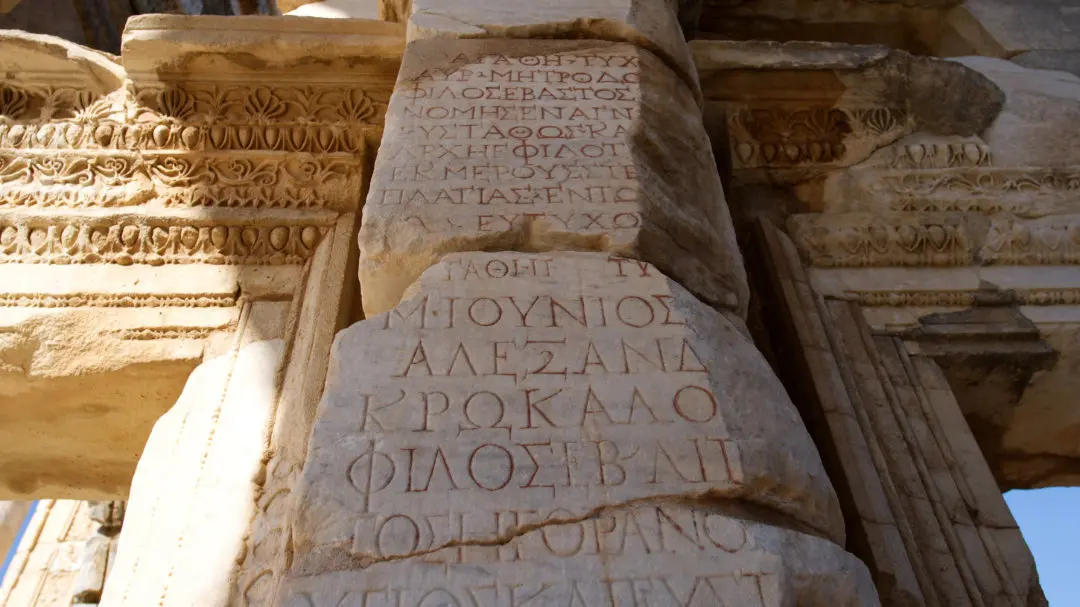
Engravings on Gate of Mazeus
01 – Harbour Street | Arcadian St
This street connected the heart of Ephesus to the harbour. Back then it stretched for more than 500 metres. Its was one of only three streets in the Roman empire that was lit up with 50 streetlights! The reason Ephesus became such a wealthy and prosperous city was due to the port and illusive trade with the rest of the empire. This street was the start of that power and wealth. A constant flow of commerce, including merchants, vendors, goods, carts, and people, bustled along this street, connecting the city to the docks.
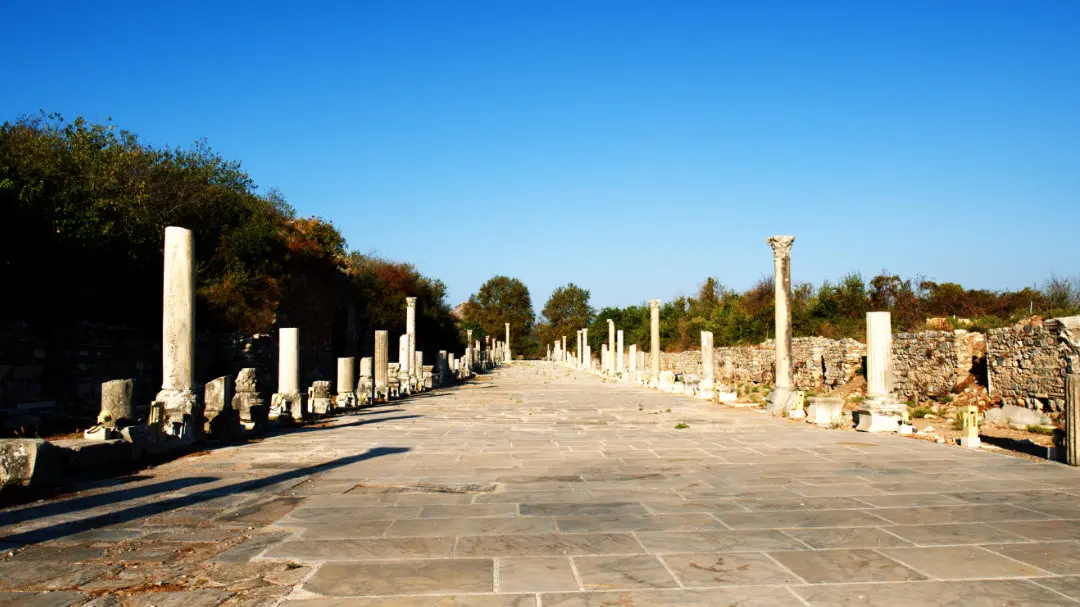
Harbour St
02 – The Grand Theatre
One of the biggest in all of Asia minor, the Grand Theatre at Ephesus is a whopper! Extremely well preserved and is was said to house up to 25, 000 people at full capacity. It’s a beheamoth in size and in reputation. It is created in the traditional Hellenistic style (where the theatre is built into a hill (this one into Panayir hill).
The Grand Theatre held all the favourites forms of entertainment of the ancient world: plays, comedies, dramas, satires, religious and ritualistic festivities along with celebrations. Not to forget the infamous gladiatorial fights and animal sacrifices.
One of the biggest in all of Asia minor, the Grand Theatre at Ephesus is a whopper! Extremely well preserved and is was said to house up to 25, 000 people at full capacity. It’s a beheamoth in size and in reputation. It is created in the traditional Hellenistic style (where the theatre is built into a hill (this one into Panayir hill).
The Grand Theatre held all the favourites forms of entertainment of the ancient world: plays, comedies, dramas, satires, religious and ritualistic festivities along with celebrations. Not to forget the infamous gladiatorial fights and animal sacrifices.
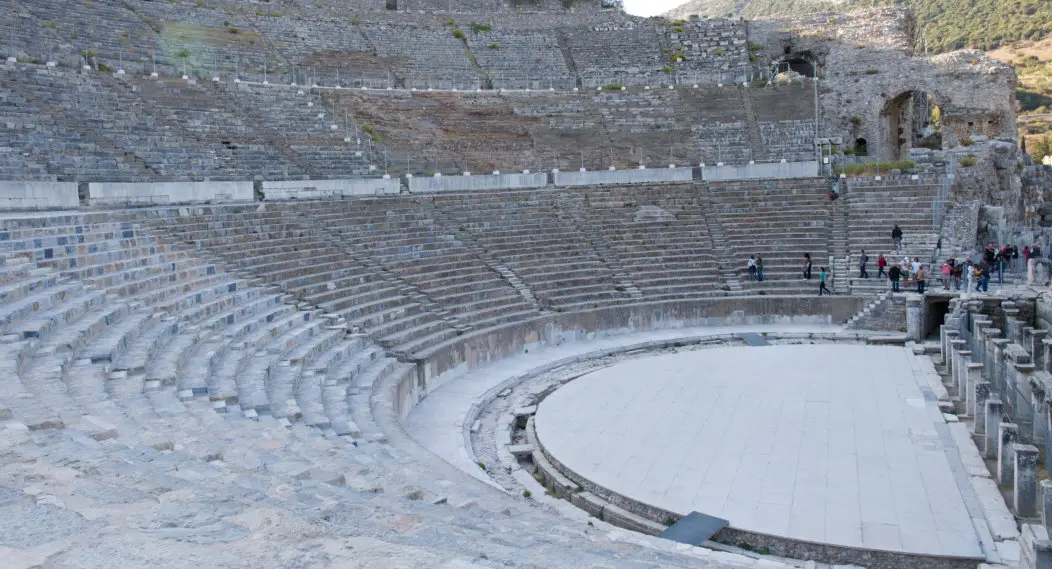
Centre Stage
03 – Library of Celsus
This is what you come to Ephesus for. Rome has the colosseum, Ephesus has The Library of Celsus, It is the show stopper. Renouned for it’s tall facade and ornate detail: the building was named in tribute to Tiberus Julius Celsus by his son after his death. It was completed under the rule of Emperor Hadrian. It is awe-inspiring in height, stature and allure.
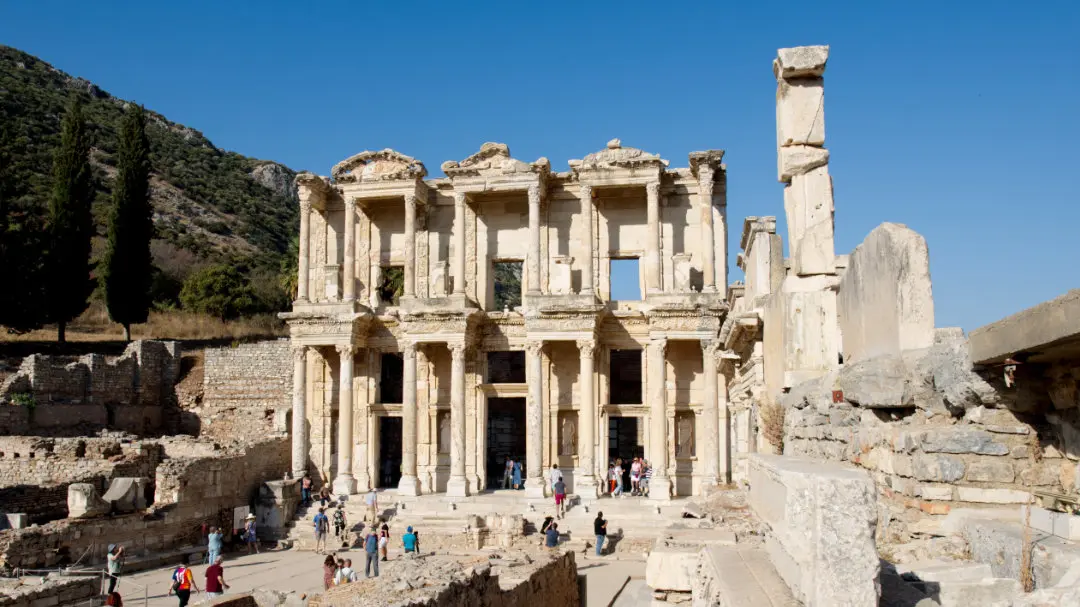
The Library of Celsus
4 – Marble Street
Marbled street is exactly how is sounds…A Marbled Street. This is one of the main streets in Ephesus which connects the Grand Theatre to the Agoras and the Library of Celsus, finally ending at the crossroads with Curates Street. The road has been so well preserved that you can walk over large marble slabs that have been polished by millennia of footsteps. Columns are present all along this walkway, as well as a wall boundary of the Agora, This street would have been lined with statues of important people of that time and many carvings for people to read. One that has stood the test of time is an ancient brothel advertisement carved into one of the stone slabs in the middle of marble street which points you in the direction of the “love house” at the end of the street.

Marble St
05 – Scholastica Bathhouse
The Scholastic Bathouse located next to the latrines off of Curetes Street. The Bathhouse was one of the largest buildings in Ancient Ephesus and could house up to 1000 people visiting at once. Set over three floors the Bathouse had an innovative and complex system of plumbing and heating and many rooms for treatments, spas and pools. Bathing was a huge part of Roman Culture. Although the baths when visiting require a bit of imagination now to visualise what they would have looked like in their glory days, but you can still get a sense of how the buildings and rooms came together. It is fascinating being immersed in part of an intimate detail of ancient life. A place that would have been such an important and ritualist place for the Ephesian people.

Ruins of the Bathhouse
06 – The Latrines
The latrines are located just off the main thoroughfare of Cureates Street and are attached to the side of the Scholastic Bathhouse. After thousands of years, they still remain pretty well intact and resemble how toilets look to this day, that is if our public toilets were a social affair with marble slabs and absolutely no privacy. Toilets back then were a communal concept and a place to socialise it was common to do your business amongst other people, and catch up on the latest gossip from your peers. The public latrines were an extension of (and housed next to) the Scholastic Bathhouse. The logistics of this was that the water from the bathhouses would provide the drainage water and flushing of the latrines. Clever use of grey waste recycling right there!

07 – Terraced Houses
These houses are the well preserved relics of how the elites of Ephesus lived. As we know Ephesus was a very powerful and wealthy city at its height of success and these houses show the grandeur and extent of how wealthy families lived. From the ruins of the terraced houses you can see intimate and timeless details that makes a house a home, and what made a house a home during the time of the Ancient Roman Empire: frescos, colourful paintings on the walls, elaborate mosiacs, bathrooms equipped with full bathtubs and inner courtyards with flowing fountains. Sounds lush, doesn’t it.

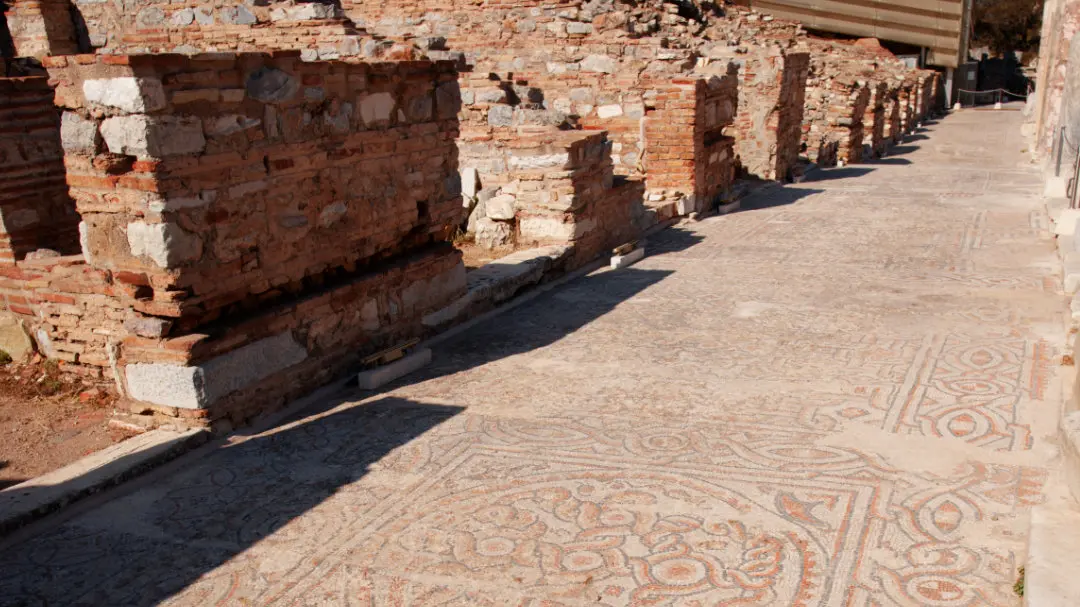
Mosaics at Terraced Houses
08 – Gate of Mazeuz and Mithridates
One of the most iconic areas in Ephesus and a favourite photo stop is the Gate of Mazeuz and Mithridates. which sits adjacent to the Library of Celsus. The gate was the thoroughfare which lead citizens from the Library forecourt to Agora. The two-toned, intricate stone gate was constructed by two slaves Mazeuz and Mithridates in 40AD in honour of Emperor Caesar Augustus, who gave them their freedom on completion of this triumphant archway.

Gate of Mazeuz & Mithridates
09 – House of Pleasure
Pleasure House, House of love, love house lots of euphemisms here, but we all know what that stands for, the house of pleasure was a brothel. The once substantially sized house stood at the crossroads of Curetes Street and Marbled Street. Not much is left of this place so you will have to use your imagination well here. The house has quite a prime location at Ephesus, being at the start of the main high street and across from the Celsus Library. There was actually a secret tunnel which joined the library to the brothel (how scandalous!) Archaeologists have discovered some pretty amazing relics inside the love house: lots of mosaics; some of women, some depicting scenes of the God Dionysus, who was the god of pleasure and wine, along with other intimate artefacts.

Near the Crossroads of Curetes St & Marbled St
10 – The Ancient advertisement
Do you want to see what could possibly be considered the world’s first-ever advertisement? It is a small carving in a slab of Marble in the middle of Marble street leading towards Curetes Street. This rare carving directs people to where the location of a brothel is located at the crossroads of Curetes Street and Marble Street. The ancient advertisement depicts a coin, an outline of a left foot, a woman, a heart and. a”T” shape. Which scholars believe to mean “turn left (Left foot) at the crossroads (T shape) where the love of a woman (Heart & Lady) can be bought (Coin) Definitely one of the coolest things to see at Ephesus.
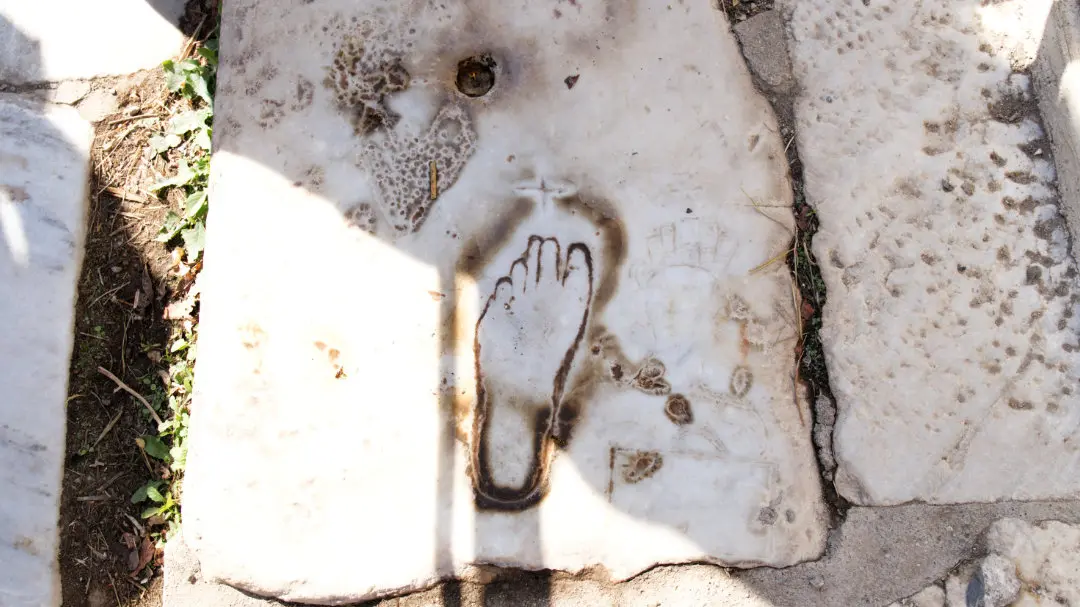
Brothel Advertisment.
11 – The Agoras
There were two agoras or “ Forums” at Ephesus, the Commercial Agora and The State Agora. An Agora was a meeting place, public square or marketplace. It was centred around trade and where people would come to gather, socialise and meet. The state agora was at the upper end of Ephesus and was the political centre and square of Ephesus. People would go to this Agora to discuss political matters. Around it was a stoa or covered walkways which sometimes housed philosophical teachings and lectures. The state Agora was also near where the Odeon of Ephesus stood.
The Commercial Agora was a large market square located across from the Grand Theatre and next to the Library of Celsus. It was the heart of trade in Ephesus and one of the most important and prosperous centres of trade in the whole of Asia Minor and the Ancient world. It was the place where goods arrived from the rest of the western Roman Empire before heading eastward along the Silk Road.
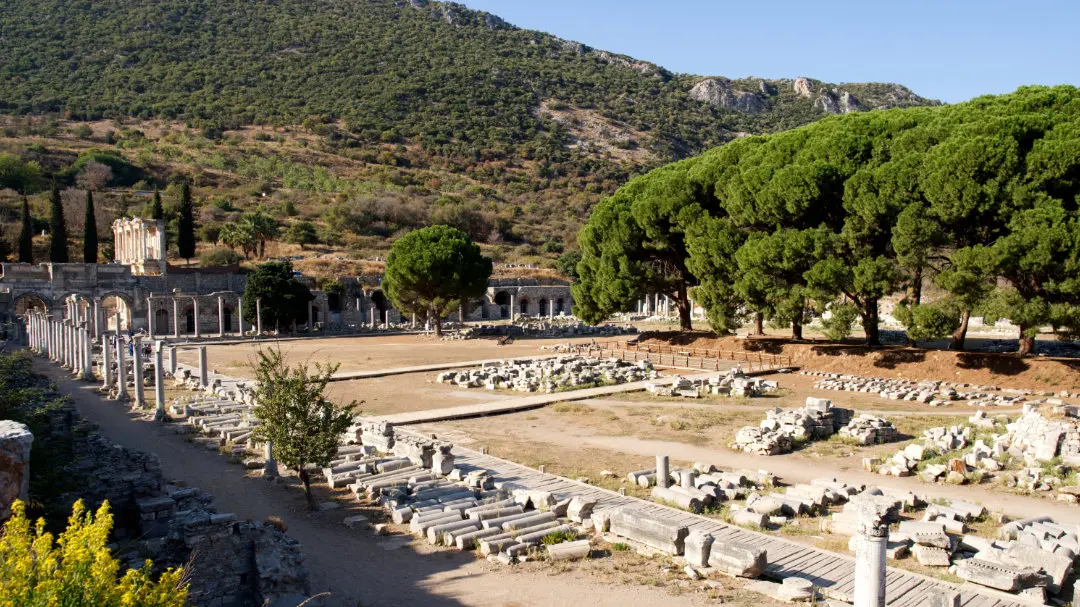
Commercial Agora
12 – Curetes Street
Curetes street was the arterial centre of Ephesus in every sense. It was the street which connected the Odeon to the Celsus Library. The main high street where you would go to have your needs met: go to the temple, go shopping, to the bathhouse or maybe to the fountain. It was the street that had all of the hustle and bustle, much like a modern-day Oxford Street: you could find shops, artisans’ workshops, places to eat, fountains, temples, houses and so much more. Underneath Curetes Street housed the city’s extensive plumbing network. It was also collonaded to protect the Ephesians from the elements. In its prime, it would have been lined with very colourful statues, carvings and marvellous columns and intricately detailed roof.

Curetes Street
13 – The Odeon
The Odeon is the smaller and more intimate theatre at Ephesus. Loacted close to the State Agora; The Odeon cold hold up to 1500 people. It was used for musical recitals, concerts, theatre shows and small events. It also doubled as a “Bucleon” where the senate of Ephesus and council members would hold their meetings, like an ancient conference room.
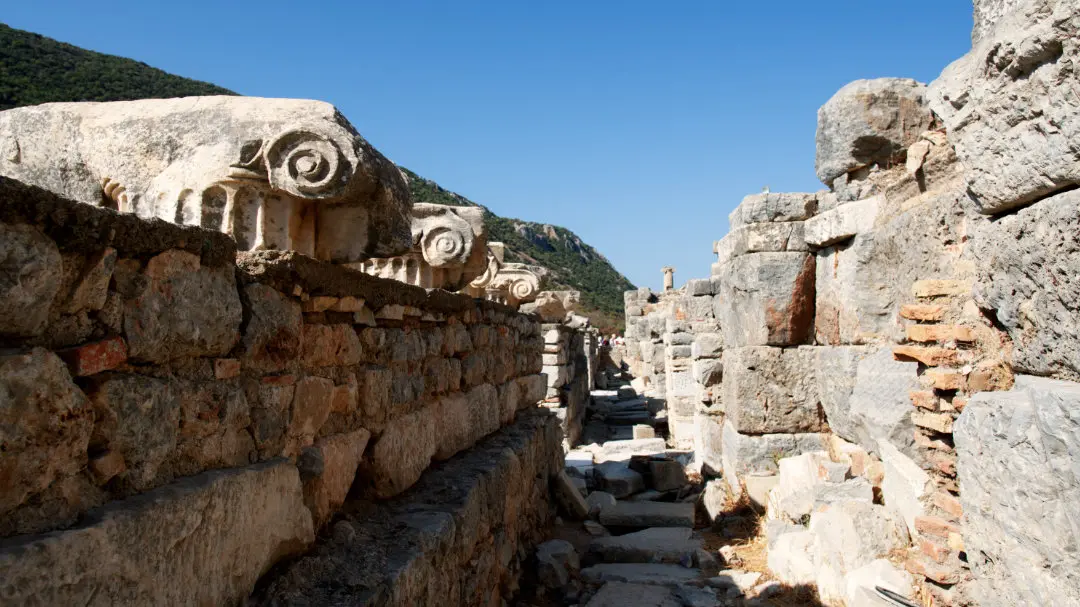
Walkway near the Odeon

The Odeon
We hope you enjoyed reading as much as we enjoyed writing, please feel free to sign up or leave a comment below if you enjoyed the read!




